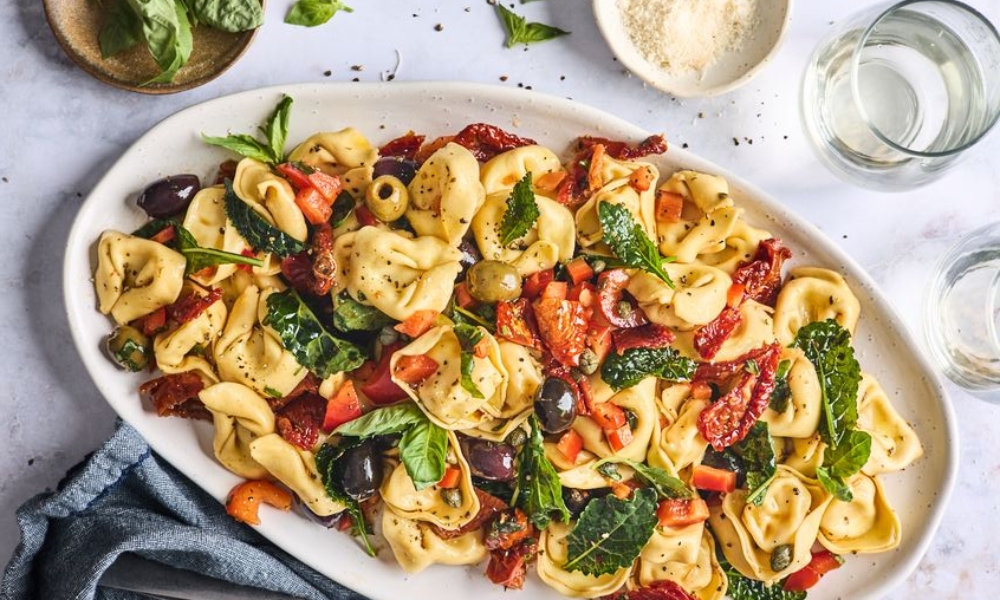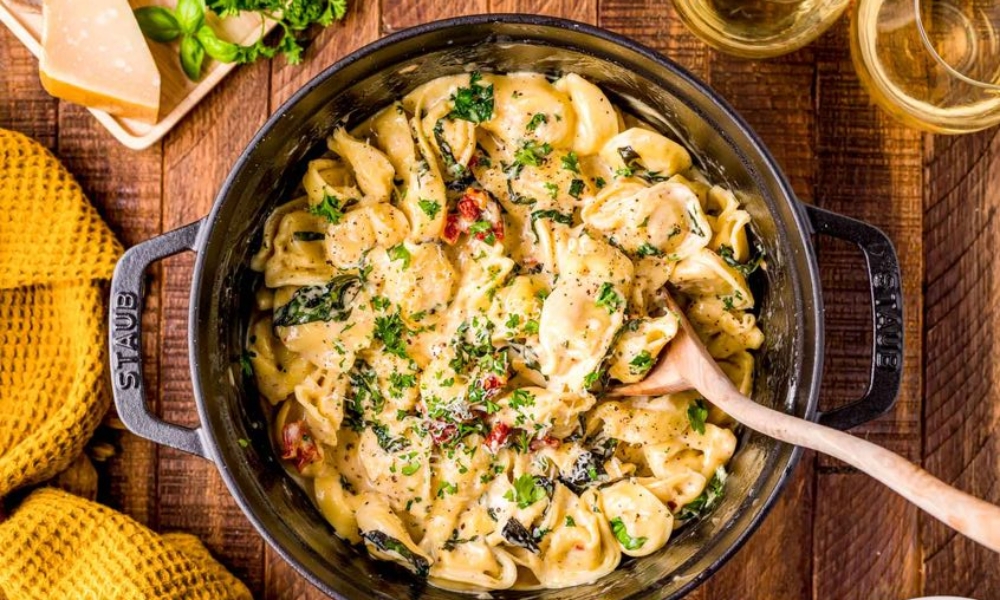The Mystery of One of Italy’s Most Iconic Pastas

Image Name: Italy’s rich culinary heritage
When you think of Italy’s rich culinary heritage, it’s impossible not to mention tortellini, a beloved pasta from the Emilia-Romagna region. However, the origins of this iconic dish have been a topic of debate for centuries. As you delve into the fascinating history and cultural significance of tortellini, you’ll uncover a story that intertwines myth, tradition, and regional pride.
The Quest for Tortellini
Imagine finally securing a reservation at the renowned Osteria Francescana in Modena, Italy, after years of trying. This three-Michelin-starred restaurant, helmed by the legendary Massimo Bottura, is known for its innovative take on traditional Italian dishes. As you savor the exquisite “Tortellini or Dumplings?” – a unique twist on tortellini in Brodo – you realize that tortellini is more than just a dish; it’s a symbol of the region’s culinary artistry.
The Heart of Emilia-Romagna
Tortellini is a circular-shaped pasta filled with a delicious mixture of mortadella, prosciutto, pork loin, and Parmigiano Reggiano cheese. While everyone agrees that it hails from Emilia-Romagna, there’s a long-standing debate about which city can truly claim its origins: Modena or Bologna. Some argue that tortellini was first made in Modena, inspired by Bottura’s childhood memories of watching his grandmother prepare the meaty morsels. Others believe Bologna, with its rich culinary tradition, is the rightful birthplace.
A Surprising Revelation
Your journey to uncover the truth leads you to a surprising revelation. According to Bottura himself, the true origin of tortellini lies in Castelfranco Emilia, a small town between Modena and Bologna. This town, famous for its pasta makers, is said to be the birthplace of tortellini, based on a mix of historical accounts and myth.
The Myth of Venus and the Innkeeper
One of the most popular myths surrounding tortellini involves the gods and a humble innkeeper. The story goes that Venus, Bacchus, and Mars visited an inn in Castelfranco Emilia. The following morning, the innkeeper, captivated by Venus’s beauty, peeped through a keyhole and saw her exposed belly button. Inspired by its shape, he created tortellini. This tale, immortalized in Giuseppe Ceri’s poem “The Bellybutton of Venus,” adds a touch of romance and intrigue to the origins of tortellini.
Historical Accounts and Regional Pride
While myths are enchanting, historical accounts provide a more concrete connection between Castelfranco Emilia and Tortellini. In the late 17th century, historian Ludovico Antonio Muratori wrote about eating tortellini soup in Castelfranco Emilia. Today, many locals and culinary experts embrace the town’s role as the mythical birthplace of tortellini. Renowned chefs like Aurora Mazzucchelli and Ottavio Gnazzo acknowledge Castelfranco Emilia’s claim, though some Bolognese chefs, like Monica Venturi, argue that tortellini was first made in Bologna, as Castelfranco Emilia was once under Bologna’s jurisdiction.

Image Name: Italy’s Most Iconic Tortellini
Variations and Traditions
The debate over tortellini doesn’t end with its origins. There are variations in size, filling, and preparation methods across the region. In Bologna, tortellini are often smaller and called “tortellini al mignolo” (pinky finger tortellini). The filling in Bologna is typically raw, while in Modena, it is browned in butter. Some chefs, like Francesco Vincenzi of Franceschetta58 in Modena, prefer a filling that is neither fully cooked nor raw, striking a balance that enhances the pasta’s texture and flavor.
A Family Affair
Regardless of the variations, one thing remains constant: making tortellini is a family affair. In Emilia-Romagna, the task of rolling out pasta by hand is traditionally entrusted to the rezdôra or the head of the household. This role, often filled by women, ensures that the art of pasta-making is passed down through generations. For many, like chef Ottavio Gnazzo, memories of making tortellini with family are cherished moments that highlight the importance of tradition.
Cultural Significance
Tortellini is more than just a dish; it’s a symbol of Emilia-Romagnan culture. It’s commonly enjoyed during festive occasions like Christmas and the Feast of Saint Stephen (Boxing Day). The annual Tortellini Festival (Sagra del Tortellino) in Castelfranco Emilia celebrates this beloved pasta with a week-long event featuring dishes from local restaurants and a live reenactment of the innkeeper’s myth.
Preserving Tradition
While chefs like Bottura are known for their innovative takes on traditional dishes, there is also a concerted effort to preserve tortellini’s heritage. Bottura and his wife, Lara Gilmore, founded Tortellante, a cooking school in Modena where elderly women teach young adults with autism how to make tortellini. This initiative ensures that the tradition of making tortellini by hand is passed on to future generations.
Conclusion:
So, which city can truly claim the invention of tortellini – Bologna, Modena, or Castelfranco Emilia? The world may never know for sure, but one thing is certain: tortellini is a defining element of the Emilia-Romagna region. As you savor each bite of this iconic pasta, you’re not just enjoying a delicious meal; you’re partaking in a rich culinary tradition steeped in history and myth.



